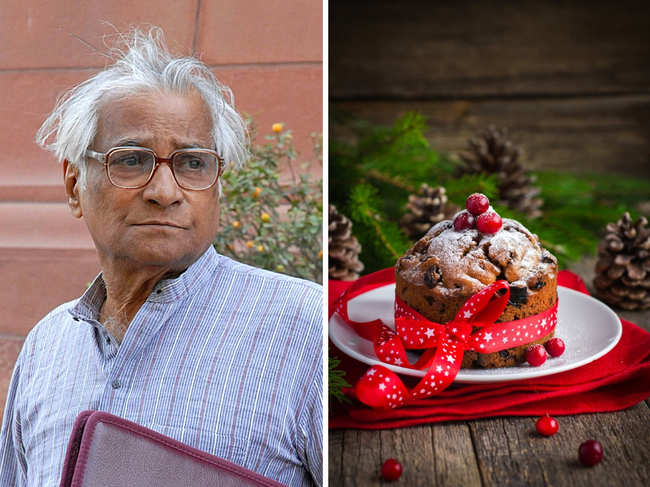 Agencies
AgenciesThe cake tradition started in 2001 when he was visiting a childhood haunt, Koshy’s Bakery in Bengaluru. Fernandes was about to visit the soldiers in Siachen, and decided to take Koshy’s plum cakes as a Christmas present.
This was a big hit, except that Fernandes heard some soldiers were upset because they hadn’t got the cakes. So, next year, an even larger order was placed, and this continued with Koshy’s sending increasingly large amounts of plum cake to the border. Even in 2005, when Fernandes was no longer minister, a consignment went with the financial support of several NRIs.
This is a testimony to an unusual politician, and also to Indians’ love of the dense dried-fruit stuffed and alcohol-drenched concoctions called plum or Christmas cakes. They were brought by the British though their own tradition, which is not that old. The cakes made to celebrate Christmas in many countries tend to be simpler, like the French Buches-de-Noel, shaped like a log, or breads like Italian panettone or German stollen.
 iStock
iStockA fruit-stuffed cake was traditionally made around this time, but for Twelfth Night, the Feast of the Epiphany that marks when the three wise men saw the baby Jesus, 12 days after he was born. There is a centuries-long tradition of cakes to mark this feast, but during the Victorian era, it was slowly supplanted by a cake for Christmas itself.
In 1884, The Times of India reported that the Maharaja of Bhavnagar had ordered “plum puddings and twelfth cakes” from Mr Buszard, a confectioner in London, but by 1899, it was reporting that the same establishment was exporting “45,000 rich Christmas cakes” along with puddings to the colonies, including India.
A taste for Christmas cakes was clearly growing and Indian bakers started making them as well. These were often given local touches, like the use of petha, candied white pumpkin, and along with the regular flour, some semolina, whose granules would swell in baking and give a distinct texture.














 Get Unlimited Access to The Economic Times
Get Unlimited Access to The Economic Times
